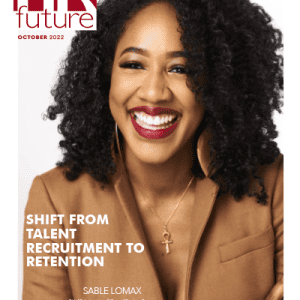Age discrimination in the workplace has become a prominent issue as the workforce ages and more individuals continue working into their later years. The challenge for older employees often includes facing stereotypes about their abilities and the perception that they are less adaptable.
The following guide aims to equip you with knowledge and practical strategies to effectively navigate and combat age discrimination in your professional environment. Recognize your rights, understand the signs of age discrimination, and know what steps to take if you believe you are a victim. Let’s dive into it!
Understanding Age Discrimination
Age discrimination refers to the unfair treatment of an employee or job applicant based solely on their age. The Age Discrimination in Employment Act (ADEA) protects individuals who are 40 years of age or older from discrimination in various aspects, including hiring, firing, promotions, and job assignments. Companies may implement policies that appear neutral but disproportionately affect older workers.
Recognizing these subtleties is the first step toward advocating for your rights. Employees may face barriers in obtaining employment or promotions due to misconceptions about their capabilities. Even pervasive stereotypes foster a workplace culture that devalues the experience that older employees provide. Employees need to document instances of discrimination to build a case, as the burden of proof often lies with the individual rather than the employer.
Steps to Take If You Experience Discrimination
If you suspect age discrimination at your workplace, act promptly and thoughtfully. First and foremost, document every instance of discrimination, including dates, witnesses, and specific comments that were made by employers or coworkers. This record will help you establish a pattern of behavior that supports your claim.
Next, consider discussing your concerns with your direct supervisor or Human Resources. Approach the issue with a calm demeanor and present clear evidence for a constructive dialogue. If informal discussions do not yield any positive results, formalize your complaint through written communication to elevate the concern officially. In many organizations, a formal investigation will commence at this point, which offers you further protection against retaliation.
If the internal process does not resolve the issue or if the discrimination persists, it’s time to consult a lawyer in your area. If you live in the area, a seasoned New York age discrimination lawyer would substantially benefit you. They can help you navigate your options, whether pursuing a resolution through mediation or considering going to trial.
Common Signs of Age Discrimination
Various indicators suggest age discrimination may be at play within a work environment. If you notice a pattern where older employees are consistently overlooked for promotions or training opportunities, it might indicate bias. Similarly, if an employer uses language that implies a preference for younger workers during recruitment ads, this can also be a significant red flag. Changes in job responsibilities that seem to sideline older staff members can illustrate an organization’s discriminatory practices.
Seeking feedback on performance may reveal a trend; if older employees receive disproportionately negative evaluations without reasonable justification, it might be a good idea to investigate further. Other signs may include altered workload expectations or exclusion from team activities, which can foster a sense of isolation among older colleagues. Buffered by a keen awareness of these signs, you can act decisively to address inappropriate behaviors and advocate for a more inclusive workplace.
Know Your Rights
Perhaps the most important aspect of discrimination is knowing your rights. As mentioned above, the ADEA outlines protections for employees aged 40 and over against age-related biases in hiring, promotion, termination, and other employment aspects. Knowing these rights will empower you to speak out if you experience unfair treatment.
Protection extends beyond direct coworkers and includes employment agencies, labor organizations, and the federal government. Various state laws may offer further protections, expanding upon federal guidelines. Keep in mind that retaliation against an employee for filing a claim against age discrimination is also prohibited. Document any discriminatory incident as evidence that supports your claims, especially if you choose to escalate your concerns. Many organizations have comprehensive internal policies regarding discrimination, and familiarizing yourself with these documents can provide insight into the procedures to follow when reporting an incident.
The Role of Employers in Preventing Age Discrimination
Employers can cultivate an inclusive workplace that actively prevents age discrimination. Comprehensive training programs addressing unconscious bias can help educate staff about the impact of stereotypes and the importance of diversity in the workplace. Likewise, companies should audit their hiring processes to eliminate potential age biases, such as removing age-identifying information from resumes.
Promote a culture of mentorship to bridge the gap between generations and allow older employees to share their expertise while staying engaged and relevant. Companies should also encourage open dialogues about age and create spaces where employees can express their concerns without fear of consequences.
Implementing clear anti-discrimination policies during new hire orientations and refresher courses for current employees establishes expectations within the organizational culture. By addressing age discrimination proactively, employers protect their workforce and enhance productivity through a diverse range of talents and experience.
Resources Available for Victims of Age Discrimination
Victims of age discrimination can access various resources to assist them in navigating this complex issue. The Equal Employment Opportunity Commission (EEOC) is a federal agency that handles complaints related to workplace discrimination and offers guidance on filing claims. Many states also have agencies that specialize in employment discrimination and provide additional avenues for recourse.
Professional organizations focused on older workers, such as AARP, provide valuable resources ranging from legal assistance to educational programs. Community centers and local advocacy groups often offer workshops and resources tailored to older professionals facing discrimination. Seeking legal representation from a qualified attorney can positively impact your case: they will give you some tailored advice and advocacy when dealing with discriminatory practices. They will help you understand your options within the legal framework and empower you to stand up against discrimination confidently.
Fighting age discrimination in the workplace can foster an inclusive environment where all employees can thrive. Understand your rights, recognize the signs of discrimination, and know the proper steps to take and empower you to navigate this professional challenge successfully. Remember — age should never be a determinant of your capabilities or potential; take action where necessary and seek out the support that you deserve.
Allen Brown is a dad of 3 kids and is a keen writer covering a range of topics such as Internet marketing, SEO and more! When not writing, he’s found behind a drum kit.




























